Insane sailing for Transat Jacques Vabre
Published on November 8th, 2017
(November 8, 2017; Day 4) – Blistering conditions continue for the doublehanded Transat Jacques Vabre as the four classes (Ultime, Multi 50, Imoca, Class40) make their downwind descent below the Azores in northeasterly winds.
The Anglo-Spanish duo, Phil Sharp and Pablo Santurde (Imerys Clean Energy) extended their lead at the front of the 40ft monohull fleet, as Halvard Mabire and Miranda Merron (Campagne de France) were limping back to Cherbourg, their home port, nursing a broken port rudder. They are expected back at midday tomorrow (Thursday).
Such has been the pace, complication and fatigue after 72 hours at sea since the start from Le Havre on Sunday, that Sharp admitted that he fell asleep at the helm today (Wednesday): “That’s when I realised it might be a good idea to change with Pablo,” Sharp said. “I think we’re getting 3-4 hours in 24 hours.
“It’s been difficult because it’s been really unstable, so it’s hard to keep the boat flat the whole time. I woke up a couple of times in the night with the boat over and my bunk nearly vertical. It’s quite alarming. The second time I came back to find the sleeping bag had unfortunately gone in a big pool of water in the boat – that was not good.”
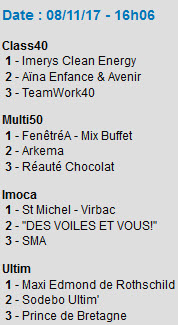 Sharp took back the lead last night then stretched 20 miles ahead of his nearest French rival – Aïna Enfance & Avenir – with five French boats all within 40 miles behind. Despite the fatigue and hot-bunking one wet sleeping bag between them, he and Santurde were able appreciate the result of their efforts.
Sharp took back the lead last night then stretched 20 miles ahead of his nearest French rival – Aïna Enfance & Avenir – with five French boats all within 40 miles behind. Despite the fatigue and hot-bunking one wet sleeping bag between them, he and Santurde were able appreciate the result of their efforts.
“The conditions we had yesterday were insane, pushing the boat like that pretty much the whole day at speeds on the limit was quite an experience,” said Sharp. “We’ve been pushing really hard and when we realised we’d taken a big advantage it was hugely positive for us and we’ve been really spurred on to try keep extending.”
The bad news is that the antenna on their main satellite system failed this morning so they have not been able to download weather files. With no outside assistance allowed, that will be complicated as both the Class40 and the back of the larger Imoca 60ft monohull fleet will have to cope with squalls, gusting up to 30 knots and big seas in the open seas off Portugal as they head to the Azores.
For the two Ultime-class trimarans at the front, it looks like being a much easier giant slalom on port tack all the way to the Doldrums. The Multi 50 and the leading Imocas have a few more bumps in the road, with a cross sea and they need to be accurate with the route and avoid the effects of the active depression around the Canaries.
Whilst you are sleeping, spare a thought for Lionel Lemonchois and Bernard Stamm, Prince de Bretagne, the smaller Ultime, who will make their pit-stop to fix the broken mainsail halyard tonight in the shelter of the island of Santa Maria in the Canaries. “We should get there between midnight and one o’clock in the morning (French time),” Swiss co-skipper Stamm said. “We have to get up the mast and put everything right in less than two hours. We will see if we can get everything down or not.”
Speaking about the damage sustained crossing the cold front that battered the fleet yesterday and that has knocked them out of the running and maybe out of the race, Merron said both she and Mabire are uninjured but feeling low.
“Other than being absolutely gutted, we’re fine,” Britain’s Merron said. “We’d positioned ourselves in relation to the rest of the fleet where we wanted to be (and were lying in fifth place), we had good downwind conditions, we had the fractional spinnaker and two reefs in the main and the boat was flying. Then the boat wiped out, it took us a while to get it upright, whereas normally its straight away, then we realised the port rudder (bracket) had broken and then the boat obviously wiped out again pretty much immediately.
“We don’t know whether we wiped out because of the rudder or if the wipeout caused the boat to break. Then, we couldn’t get the boat upright because the rudder was swinging around wildly. Then the spinnaker blew up. So, it took a while to sort that out, because it was in several pieces and didn’t want to come down. We got that down eventually and managed to detach the rudder before it made a mess of the back of the boat.”
The damage has forced Merron and Mabire, partners on land as well at sea, back to France rather than heading to Spain, which would have required a starboard tack.
“We can only sail on port tack, as we’ve only got the starboard rudder at the moment,” Merron said. “We looked at our options and decided to go Cherbourg because the conditions were favourable for getting there on port tack and at least we’ll be in a home port and we can have a look to see whether we can repair it quickly and leave again.”
Race details – Entry list – Tracker – Facebook
13th edition of the Transat Jacques Vabre
• Biennial doublehanded race now 24 years old
• Two founding partners: the city of Le Havre and brand Jacques Vabre
• Four classes on the starting line: Class40, IMOCA, Multi50, and Ultimate
• Starting November 5 in Le Havre (FRA) for the 4350nm course to Salvador de Bahia (BRA)
n 2013, and again in 2015, all the boats flew past Salvador de Bahia, sails filled by the trade winds of the south-east, under the tropical sun…One imagines that they dreamt of finally finishing their race in All Saints’ Bay. In 2017, it will be a reality!
After the start line and a coastal route as far as Etretat, the duos will head towards Brittany to get out of the Channel as quickly as possible, where the currents are powerful, cargo traffic dangerous, and a lot of attention is needed.
They will then enter the Bay of Biscay, where, depending on the position of the Azores anticyclone, they will either find downwind conditions, easy and fast, like for the last Vendée Globe, or tougher and slower conditions in the passage of some late autumn depressions.
Four hundred miles later, having passed Cape Finisterre, the northern Portuguese trade winds should propel them quickly towards Madeira, and then the Canary Islands, where awaiting them will be northeast trade winds, which could be strong or weak.
Passing close to the Portuguese coast, or offshore, to the east or west of the Canary Islands and then the Cape Verde islands – you have to choose the right options. The next goal is to establish your position for the crossing of the dreaded Doldrums, located a few degrees north of the equator. At this time of year, it can change position very quickly, extend or contract, because even after carefully studying of the satellite images, sudden squalls can develop and stall the competitors under a good shower without wind for hours.
This passage is crucial in the Transat Jacques Vabre racecourse. Further west… Further east… After the calms, rainy squalls, with too much or no wind… The final goal is to get out well-positioned enough to benefit first from the southeast trade winds and to cover the remaining 850 miles towards the finish,passing along the islands of Fernando de Noronha, along the coast of Brazil and finally heading northwest into the magnificent All Saints’ Bay.
This transoceanic racecourse from North to South is more demanding than a transat from East to West; it requires the skippers to have sharp tactical and strategic qualities, good weather training, to be in excellent physical condition to maintain a sustained speed in the trade winds… And to have a lot of patience to cross the equator.
Source: Transat Jacques Vabre


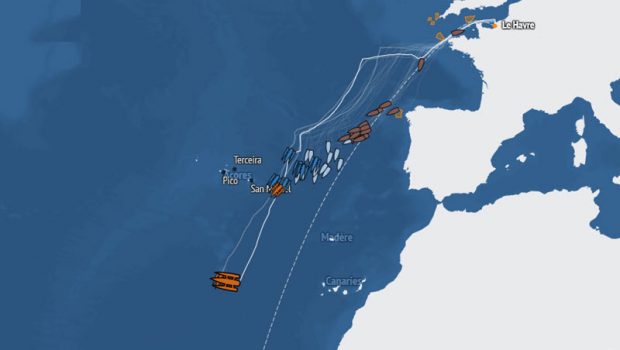

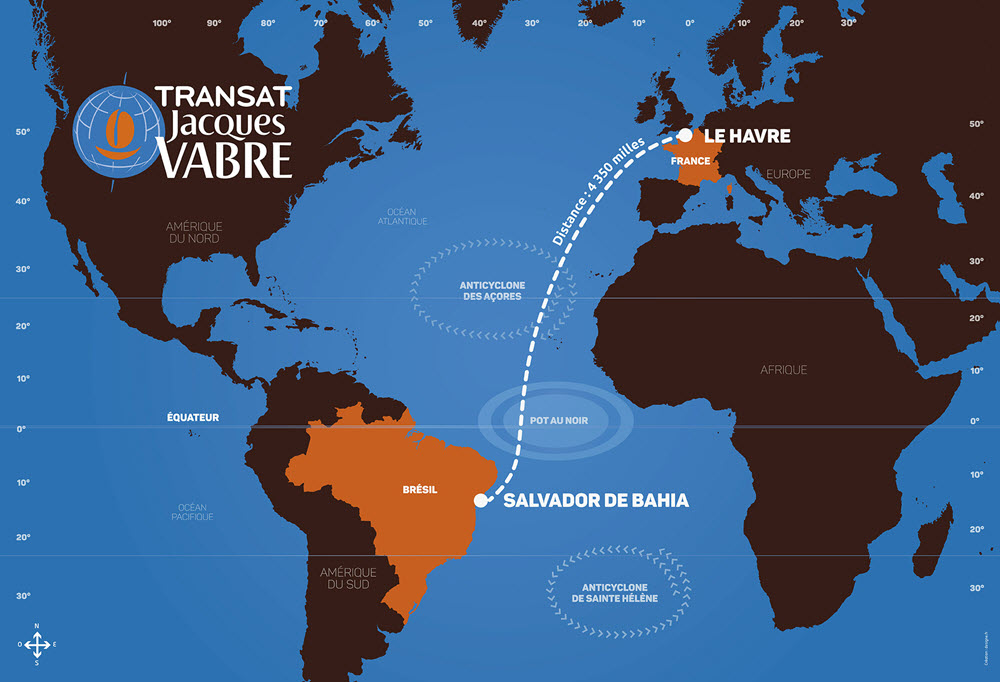

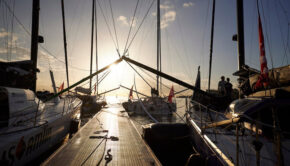
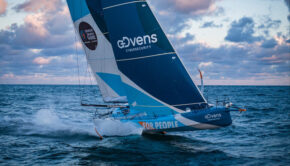
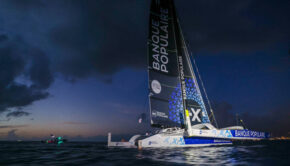
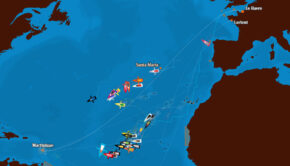
 We’ll keep your information safe.
We’ll keep your information safe.